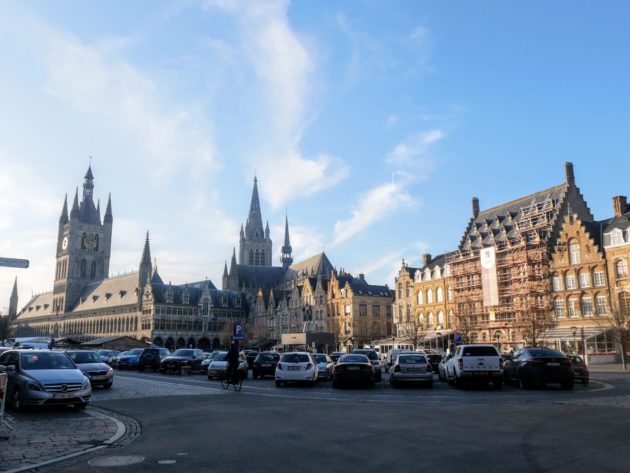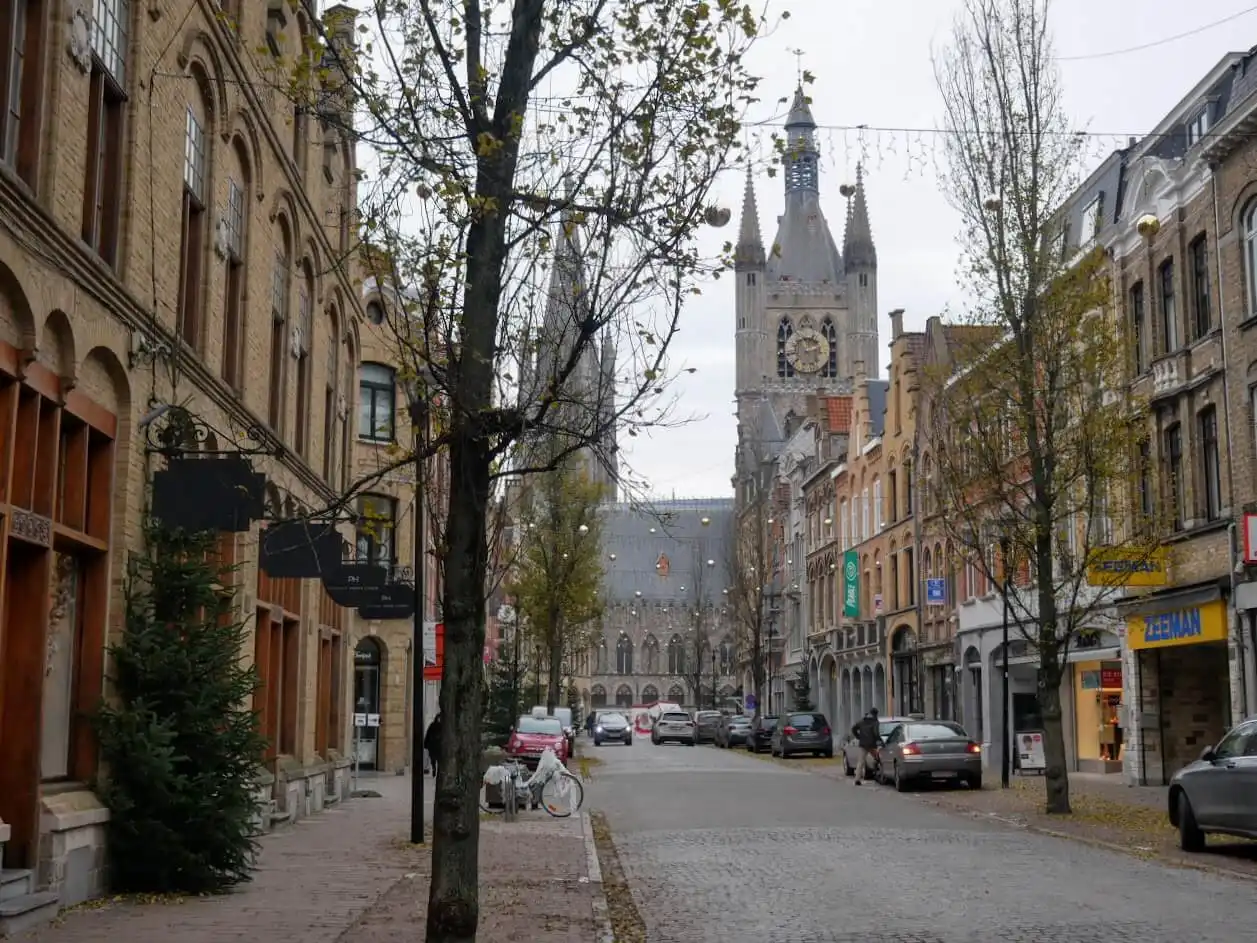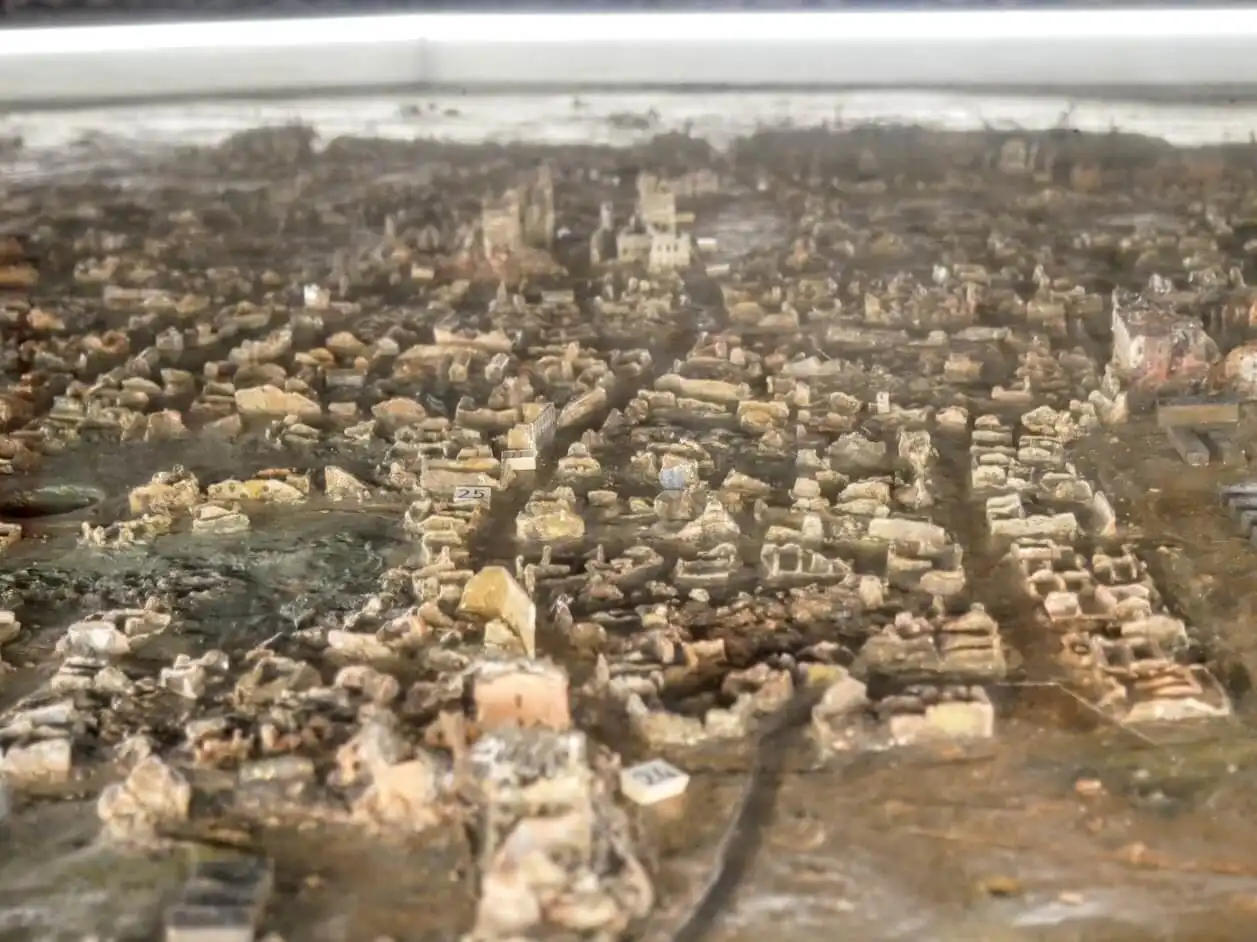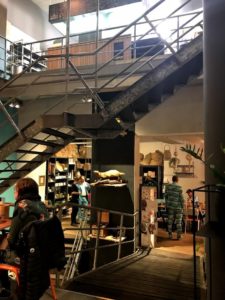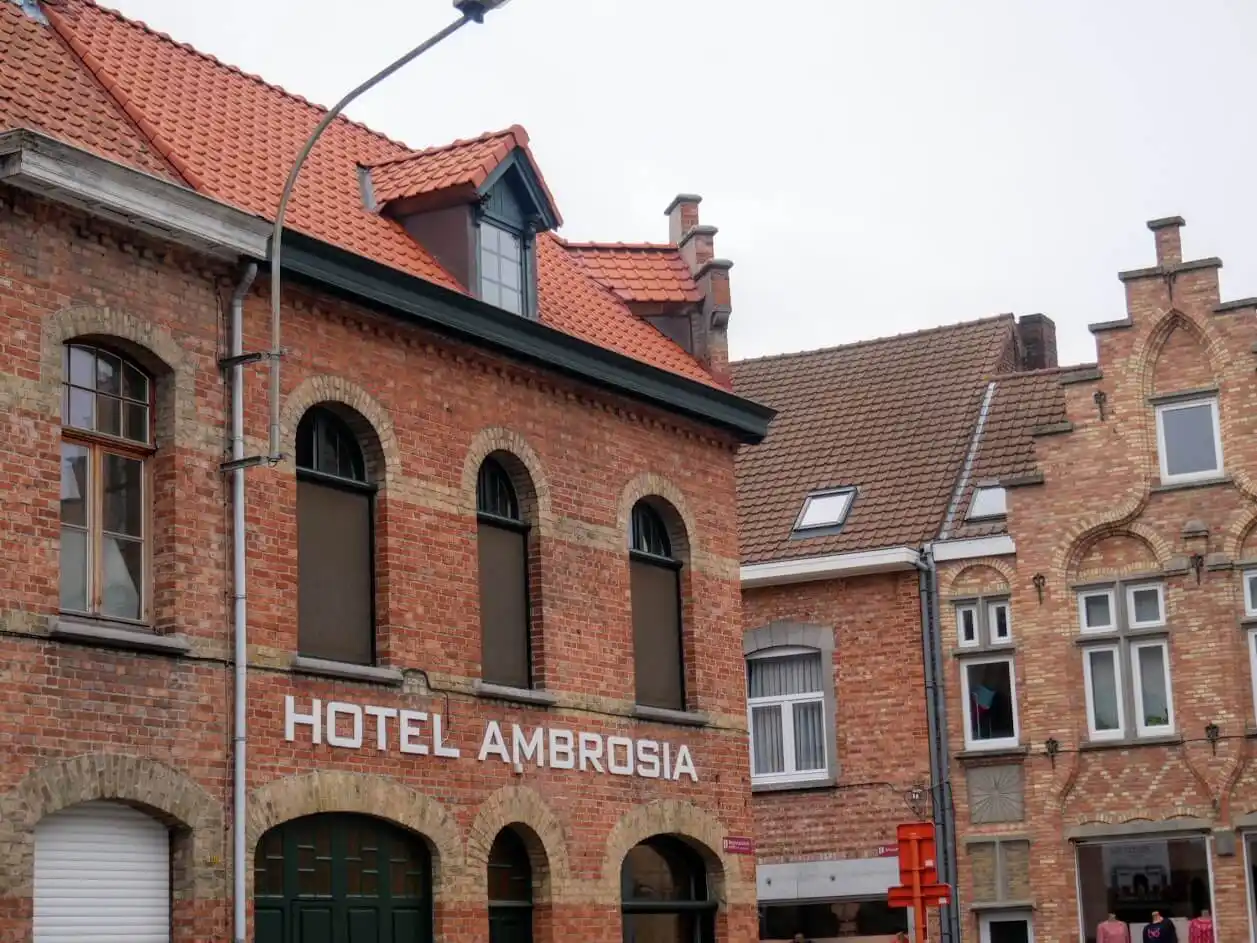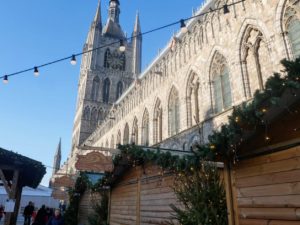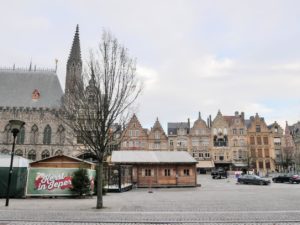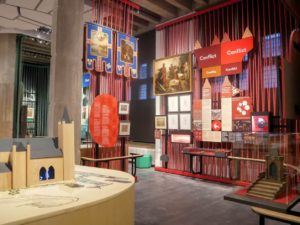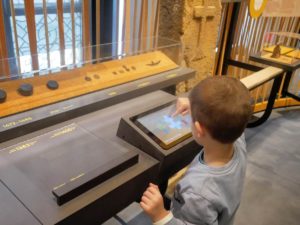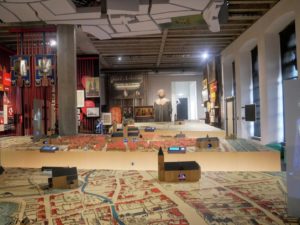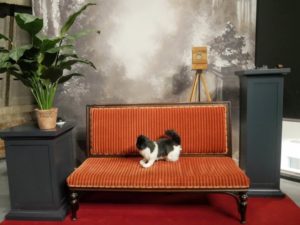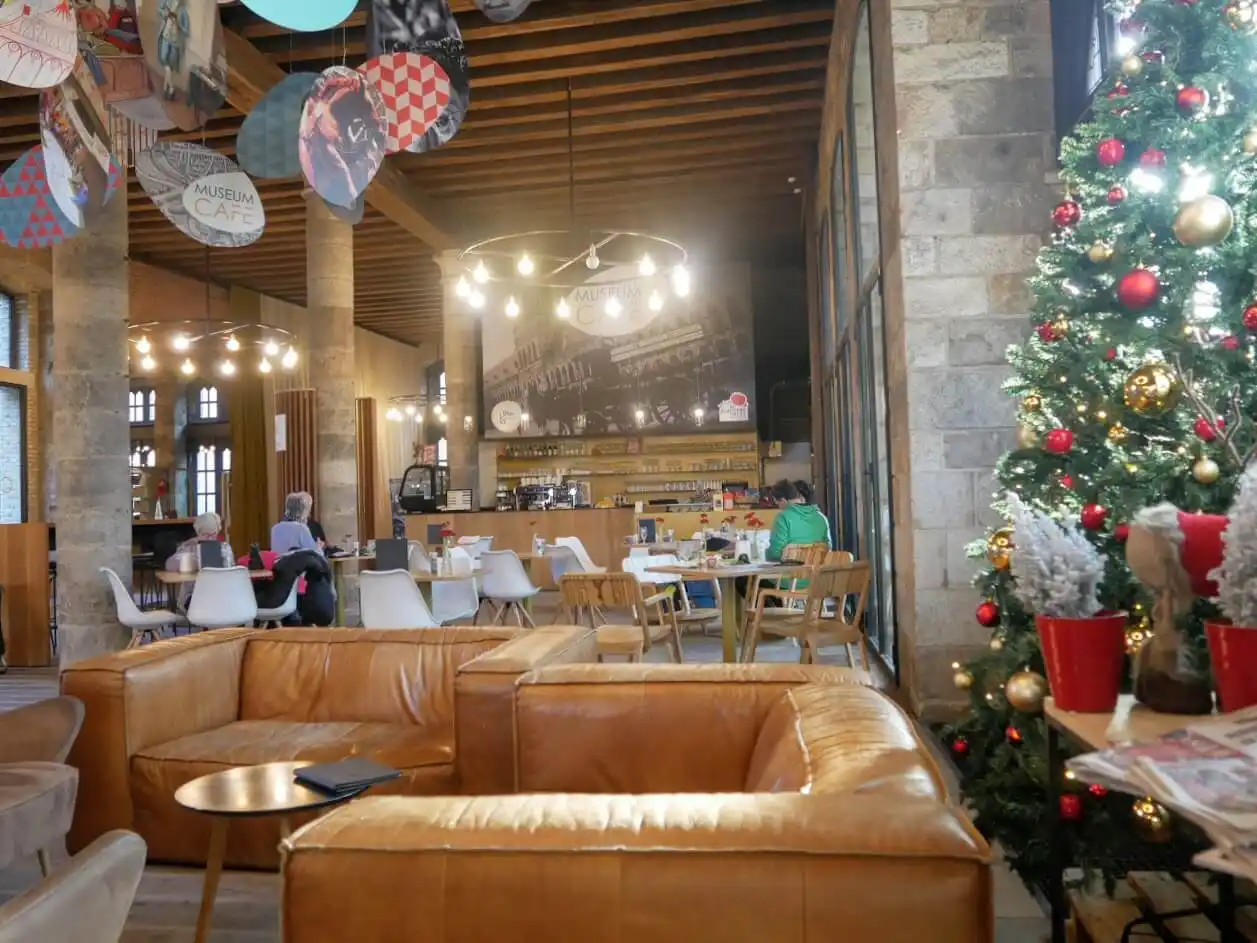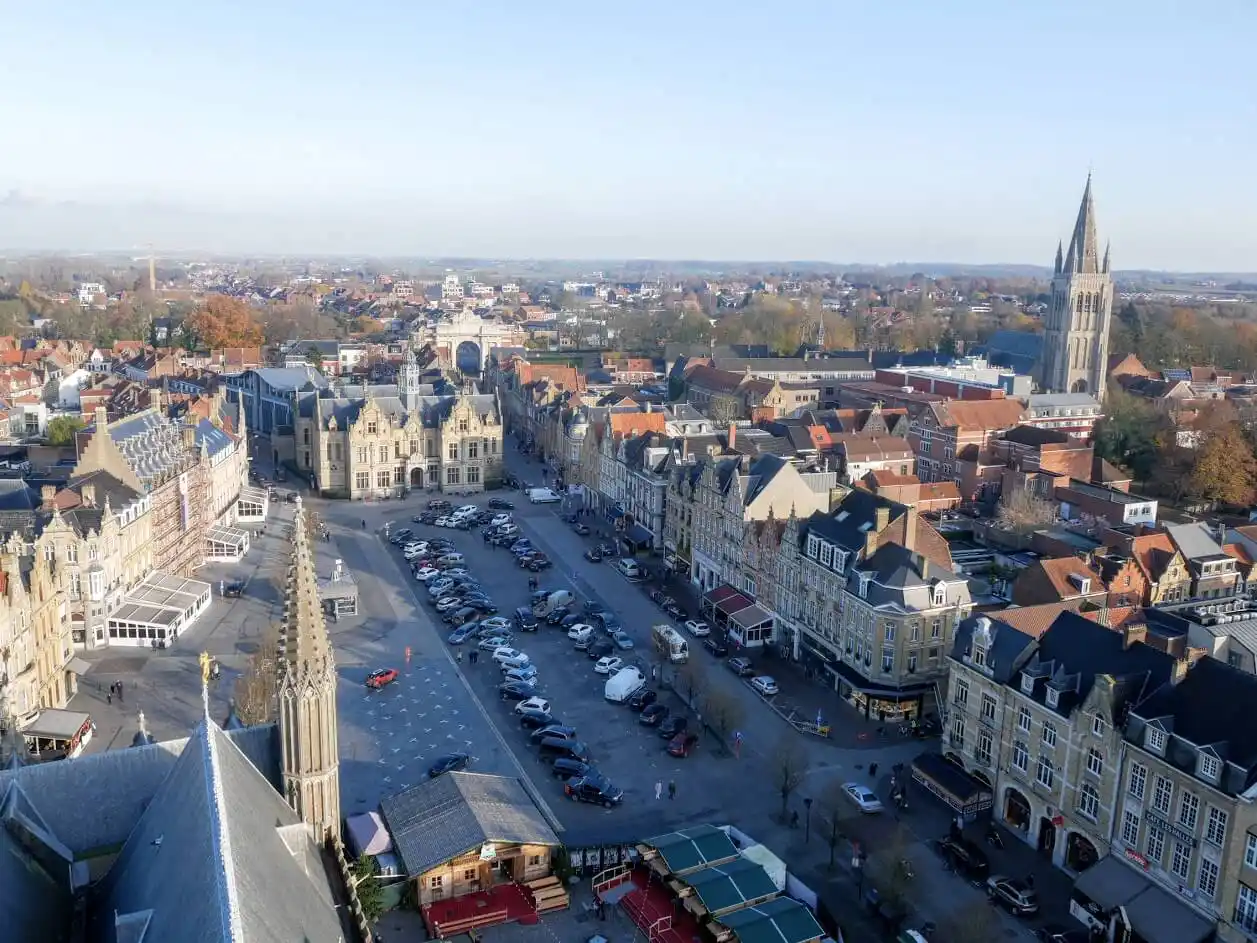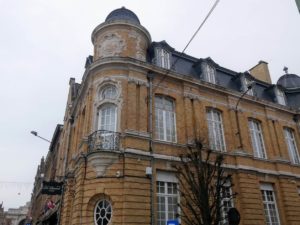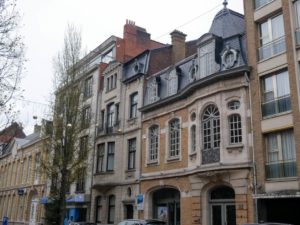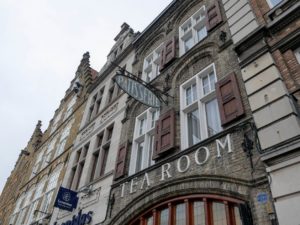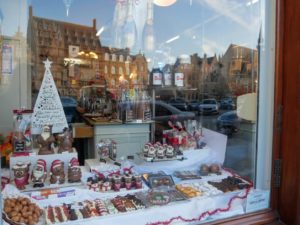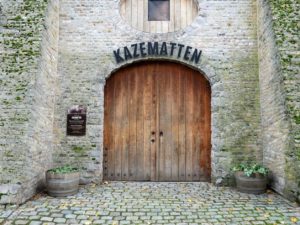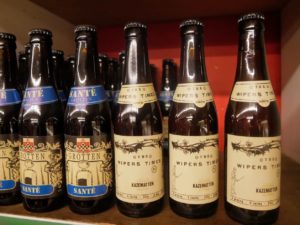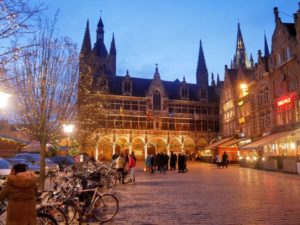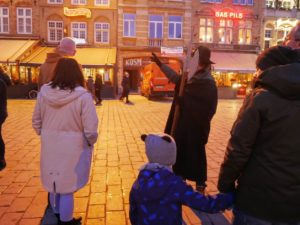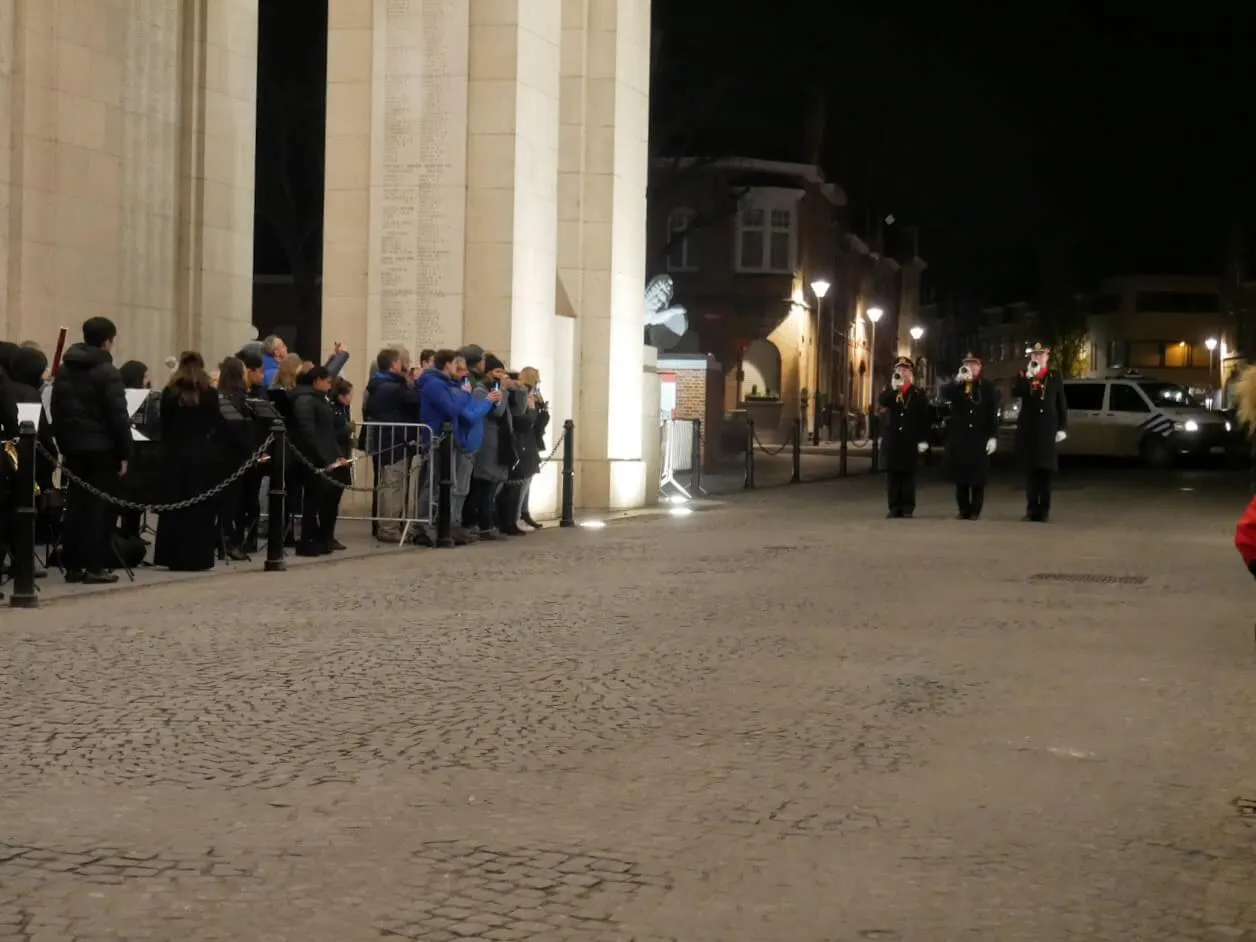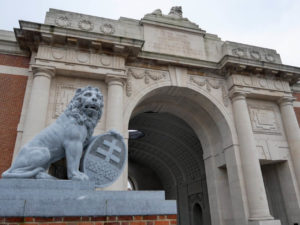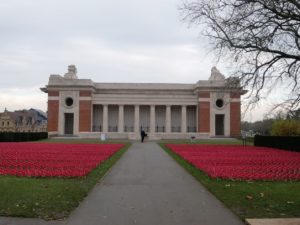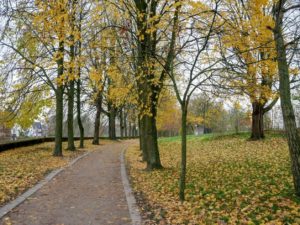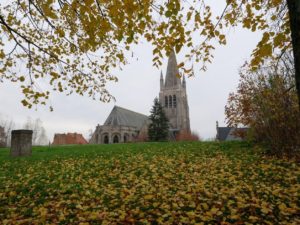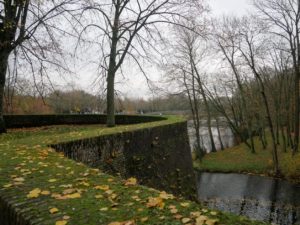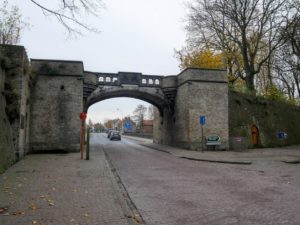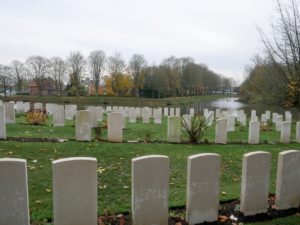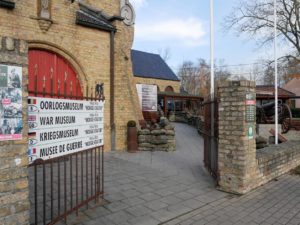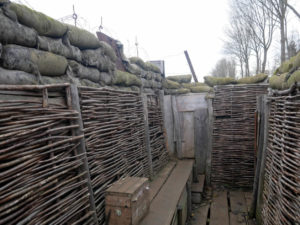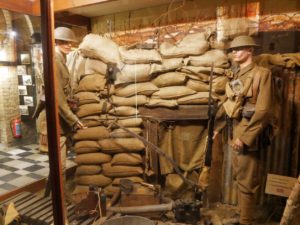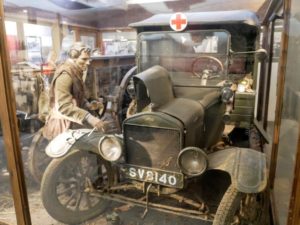Belgium is definitely one of my favourite countries in the world. You can open up a map of it, pick up any town, and there is a big chance it’s going to be gorgeous, have some fascinating history and, of course, it’s own beer production. That’s why weekend trips to Belgium became a regular thing for my family and me. A few days ago, we’ve spent a weekend in Ypres and were absolutely amazed by its charm, beautiful architecture, and intriguing past.
Weekend in Ypres
I went to Ypres with my husband and 5-year-old son, and we have visited it on the first weekend of December. So, besides some child-friendly tips, you’ll also find here some extra recommendations for the things to do during the winter months in Ypres.
Name of the town: Ypres or Ieper?
As with many Belgian towns, you’re going to find Ypres by different names. Dutch version Ieper, pronounced with a rolling R in the end, is the official name of the city. However, its French name Ypres is more often used in English. So, don’t be surprised to see both of these names around.
How to get to Ypres
From the Netherlands: We have travelled to Ypres from Amsterdam by train. We had to change the train in Antwerp, and it took us around four hours to get there. Because it’s quite convenient, travelling by train is my favourite way of getting to Belgium. You can check the time schedule on NS International Website. They are often running promotions, so you can find quite affordable train tickets there, too.
*Child-friendly TIP: We travelled in the first class, where the seats are quite spacious, and often there are small tables between the chairs. It was very convenient because Karlo could play and draw. And we were sure we’ll find some available sits.
From UK and France: Ypres is located very close to Lille in France, which is well connected with both London and Paris. You can take a fast train Eurostar (from London) or Thalys (from Paris) to Lille. And change for a local train to Ypres then.
What is so special about Ypres – Short history of Ypres
With its cobbled streets, beautiful gabled houses and the old historic centre, Ypres looks like any other Flemish town. However, I start to look at it with a different pair of eyes, once I learned it was almost completely destroyed during the First World War. And everything I could see around myself in Ypres was rebuilt after it.
The history of Ypres is, like with many other Flemish cities, linked to trade, its cultural heritage and complicated politics. Because of the booming clothing industry, it was one of the wealthiest towns in Flanders during the Middle Ages. Amongst the other things, the result is a beautiful Cloth Hall on its main square. It was a place where they were selling and storing the clothes. Belfry Tower was built around the same time, witnessing about the civic power of the city.
During the next few centuries, Ypres was changing the rulers quite often. It was ruled by Spain, France and Austrian Habsburgs before it finally became a part of the Kingdom of Belgium in the 19th century. When the First World War started, Ypres had an important strategic position for Germans, who needed to capture it to proceed to France. The city was occupied and heavily bombarded during the four years of war. And in 1918, when the war finished, Ypres was almost completely destroyed. However, the reconstruction soon started, and by using the existing plans of the city and architectural drawings of the buildings, they rebuilt the city entirely. So, today it looks like it did before the war. Instead of being known as The City of War, Ypres is presenting itself today as The City of Peace.
⤷ Would you like to explore some other towns while in Flanders? Check out my guides to Mechelen, Bruges and Leuven!
What to do during the weekend in Ypres
I have spent a weekend in Ypres with my family. However, although having a feel of a small town, you can easily add a few more days to explore its surroundings, as well.
Friday in Ypres
We arrived at Ypres on Friday evening. After checking in at our hotel, we went for a dinner at a lovely restaurant called Dépot. Besides its art and culture, food is another one of my favourite things in Belgium. And the food in Dépot definitely fulfilled our expectations. It’s a modern restaurant with the idea that everything you see there is for sale (well, besides the stuff). They also had a great children menu, so it is a lovely child-friendly restaurant in Ypres, as well.
Child-friendly hotel in Ypres
We stayed at a cute family-owned Hotel Ambrosia, and I definitely recommend it to families visiting Ypres. It’s located at the very city centre, in one of the historic buildings restored after the First World War. Upon our arrival, Karlo has got a little stuffed bear as a present, and he capt carry it during our whole weekend in Ypres. The family room was spacious enough for us, and we were very excited to find some hagelslag at breakfast, too (for the ones not familiar with it, these are chocolate sprinkles you can put on a slice of bread, very popular in the Netherlands and Belgium).
Saturday in Ypres
After some good night sleep and delicious breakfast at our hotel, the next morning, we strolled towards the main square to explore Ypres more. The city was just waking up, and streets smelled like freshly made waffles and pastries. Each Saturday a market is organised at its main square, the Grote Markt, so we wandered around it and enjoyed feeling like locals.
The Grote Markt Square is surrounded by some typical Flemish gabled houses, built of light orange and pink bricks and already decorated with Christmas ornaments. The largest building there is the Cloth Hall, which is definitely showing the importance this small town had back in time, as one of the three most important Flemish cities during the Middle Ages (next to Bruges and Ghent). It was built in 1304 in Gothic style. It’s hard to imagine the building was almost completely demolished during the First World War. Today it’s home to In Flanders Fields Museum, Yper Museum, Museum Cafe and a Tourist Information Centre. So, it’s a place you can not miss when visiting Ypres.
*TIP: Many festive events and activities are organised during the Winter in Ypres, between November 15th and March 31st. An ice skating rink and a Christmas market are located just in front of the Cloth Hall. We really enjoyed spending some time there during our weekend in Ypres.
Yper Museum
After a short walk around the Grote Markt, we went to the Yper Museum. Opened quite recently, in 2018, this museum is a great child-friendly place to visit while in Ypres. You can get an excellent overview of Ypres history, learn more about its coat of arms and some of its rulers. My favourite part was a visit to the old photo atelier where we could take our photo dressed in a fashion from the beginning of the 20th century.
*Child-friendly TIP: The museum has a special walk for children during which they could look for a cat hidden somewhere in there. They are going to get a special ribbon bracelet with which they could activate and solve some quests on the interactive screens in the museum. Karlo really enjoyed in his special mission and was overly excited once he was told that because he solved it well, he could pick up a special present at the gift shop.
Lunch at the Museum Cafe
After spending a couple of hours at the Yper Museum, we were ready for some delicious lunch. And we decided to have it at its Museum Cafe. With its wooden beams and brick walls, it almost felt like we were at an old historic inn. It’s a great place to have a stop at, in between visiting the two museums located at the Cloth Hall.
In Flanders Fields Museum
Another museum located there is the In Flanders Fields Museum dedicated to the history of the First World War in this part of Belgium. By using videos and interactive displays, the museum is telling the story of this sad part of European history through the personal memoirs of people involved. But, also by explaining the historical and political context of it. I didn’t know much about the First World War before our weekend in Ypres, but the visit to this museum, definitely made it more understandable to me.
The most emotional story from the museum was the one about the Christmas Day in 1914. Already exhausted soldiers from both sides started to sing Christmas songs and at one point, meet in between the trenches and spent some time and celebrated Christmas together.
Belfry
Ypres Belfry could be reached from the museum, so we climbed the seventy-metre high tower and enjoyed the view on the city from it. We could see all the main sights from its top. But, it was also amazing to see Ypres in all its glory, restored and polished, and compare it with an image of destruction we’ve just seen at the museum.
Wandering around Ypres
Once back on the ground, we wandered through the city and explored some of its narrow cobbled streets. We admired different gables of the buildings and studied diverse decoration, statues and inscriptions on them. Once again, I couldn’t stop thinking about the fact that all of these were gone and rebuilt less than a hundred years ago.
While strolling around the city, we wanted to try some of the products it is famous for today. Our first stop was the Chocolaterie Vandaele. It’s located at the main square in a first building that was rebuilt after the First World War. It’s owner Carl enthusiastically told us all about it. But, then we all agreed it’s time to focus on the present and try some of the delicious chocolates there. After tasting some of them, we bought some of the Christmas themed ones that will make a nice addition to our Christmas dinner.
Another place to go when looking for some local products is Brewery de Kazematten, opened in 2013. Located inside the old casemates, the most popular beer they produce is Wipers Times. They organise guided tours, and if you would like to join some of them, take a look here for more info.
⤷ Read my guide through the Year of Bruegel in Belgium here!
The Night Watch City Walk
There are some unique activities organised during the wintertime in Ypres, and one of them is a city walk called the Night Watch. It’s held in the evening, just when it starts to get dark. Our guide was a man dressed as a historical night watchman from Ypres. He took us on a walk around the city during which we learned more about this charming town, its history and some of its buildings.
We were a small group of seven people, so we had a chance to ask all the questions. And our guide was an excellent knowledgeable local from Ypres, who also told us some stories only residents know. I was especially touched by how the devastation Ypres went through the First World War affected his grandparents, and indirectly him, as well. I believe that only through those stories you hear from the locals, you can truly understand the city you’re visiting.
Our night watchman also took us to some hidden spots in the city. He had the keys to some places in the city that couldn’t be visited otherwise. While we were walking along the ramparts, we visited a fantastic room dig deep into them, where they used to store ice some centuries ago. We also visited the house of the gatekeeper next to the Lille Gate and a room inside the city walls where we could see the underground Ieperlee River.
*TIP: The Night Watch city tour is organised each Saturday between November 16th and March 28th at 5 PM. You can check the availability and book your place on a link here.
The Last Post
During the four years of the First World War, Ypres was a place where some of the deadliest battles were fought. The city was heavily bombed, and many soldiers lost their lives there. After the war, the Menin Gate was built with names of all the soldiers who fought for the United Kingdom that were lost and don’t have a grave.
To honour them, each day at 8 PM a special ceremony, the Last Post is held there. It was so emotional to see many people gathered there to show how those who lost their lives more than hundred years ago are not forgotten. The ceremony is quite short, it lasts only around ten minutes. During it the song is played by the orchestra, a minute of silence is held, and poppy wreaths are being laid. Although so many people were there, it felt quite intimate, and I was deeply touched by it.
*TIP: I came at the Menin Gate at 7:20 PM and many people already gathered there. So, if you would like to see the ceremony well, be there at least at 7:30 PM.
*Child-friendly TIP: Although I was worried a bit about the whole war theme and presenting it to my 5-year-old son, it went quite well. I compared the siege of the city with the drawings he knew from his book about the Medieval castles. And we talked about the war and the reasons people argue and are bad to each other. If you prepare them well, a visit to Ypres could be a great thing to do with kids.
Sunday in Ypres
We were quite lucky with the weather in Ypres, and the next day we were woken up by some beautiful sun. It didn’t last for the whole day unfortunately, but at least it was dry. Our hotel was located at the historic city centre, and it was so lovely waking up in a morning and enjoying a beautiful view from our room to some gorgeous facades and buildings around us. It felt like we were locals, a bit, as well.
Exploring the Ypres ramparts
It was still quiet and calm on the street in a morning, so we felt like having the city all for ourselves. We went to the main square and from there walked towards the Menin Gate and the old city walls. They looked even more monumental than during the previous evening.
Ypres city walls were transformed to a beautiful park, and they made a lovely place for a walk. They were covered with leaves having all the colours from yellow to dark brown. Just next to the Menin Gate a small area was filled with some poppy flowers. Remembrance of the First World War is visible on every step in Ypres.
Walking around the city walls was also a nice way to get an idea of how big the historical city was, and to enjoy in some lovely views on Ypres most significant buildings. We walked to the Lille Gate, where just next to them, we visited a small graveyard from the First World War.
Hooge Crater Museum
After a pleasant stroll around the sleepy Ypres, we went on a short trip outside the city to visit another interesting place linked to the First World War. We drove to Hooge Crater Museum, located some five kilometres (around 3 miles) from Ypres. This is where some of the First World War trenches were, and where you can learn so much about them by visiting the area and a fantastic Hooge Crater Museum.
It’s a private museum where you can feel a huge passion towards the history and the First World War their owners have, on its every corner. First, we went to see some of the trenches, and it was fascinating to get inside some of them. Only then did I realised how small and claustrophobic they actually were. We also walked a bit between them, and it was so surprising to see how close to each other German and British lines were. They could literally throw a stone to each other. But, being aware of that, it became more apparent to us just how deadly being in them really was. We’ve also seen how still today you can see the remains of war in its landscape. There are huge holes caused by bombs still visible around the museum. The landscape is definitely the last witness of the war.
*TIP: Have lunch at the museum cafe! After exploring the surroundings for some time, we definitely needed a break to absorb everything we’ve seen. Their ‘Theme Cafe’ is a cosy place with some interesting First World War propaganda posters and bombshells, engraved by the soldiers waiting for a battle in some of the trenches nearby.
After the lunch, we visited the exhibition at the museum. With the life-size scene reconstructions from the First World War, many artefacts, and some great explanations from the museum owner Niek, it gave us such a great overview of everything that was happening during that time. Visiting Hooge Crater Museum was absolutely one of the highlights of our trip and I’m absolutely recommending visiting it if you happen to be in the area.
There are so many lovely things to do during the weekend in Ypres. Although well known for its role in the First World War, Ypres is so much more than that. With its charming architecture, medieval buildings, great museums and a beautiful nature surrounding it, it’s a great place to visit in Belgium.
Would you like to see more photos and short videos from Ypres? Check out my Instagram Stories Highlight on a link here!
*Many thanks to Visit Flanders and all of their partners for organising a weekend trip to Ypres for my family and me. We had a great time and enjoyed every second of it. However, as always, all opinions are my own.

